Navigate Resource Details
Resource details provide unique metadata and information specific to each resource category within the CCKP. This guide helps users quickly locate and understand metadata across different resource types by offering clear definitions and searchable keys. Navigate through these comprehensive metadata descriptions to cross-reference information or explore the detailed characteristics of grants, educational resources, tools, and other datasets.
Grants
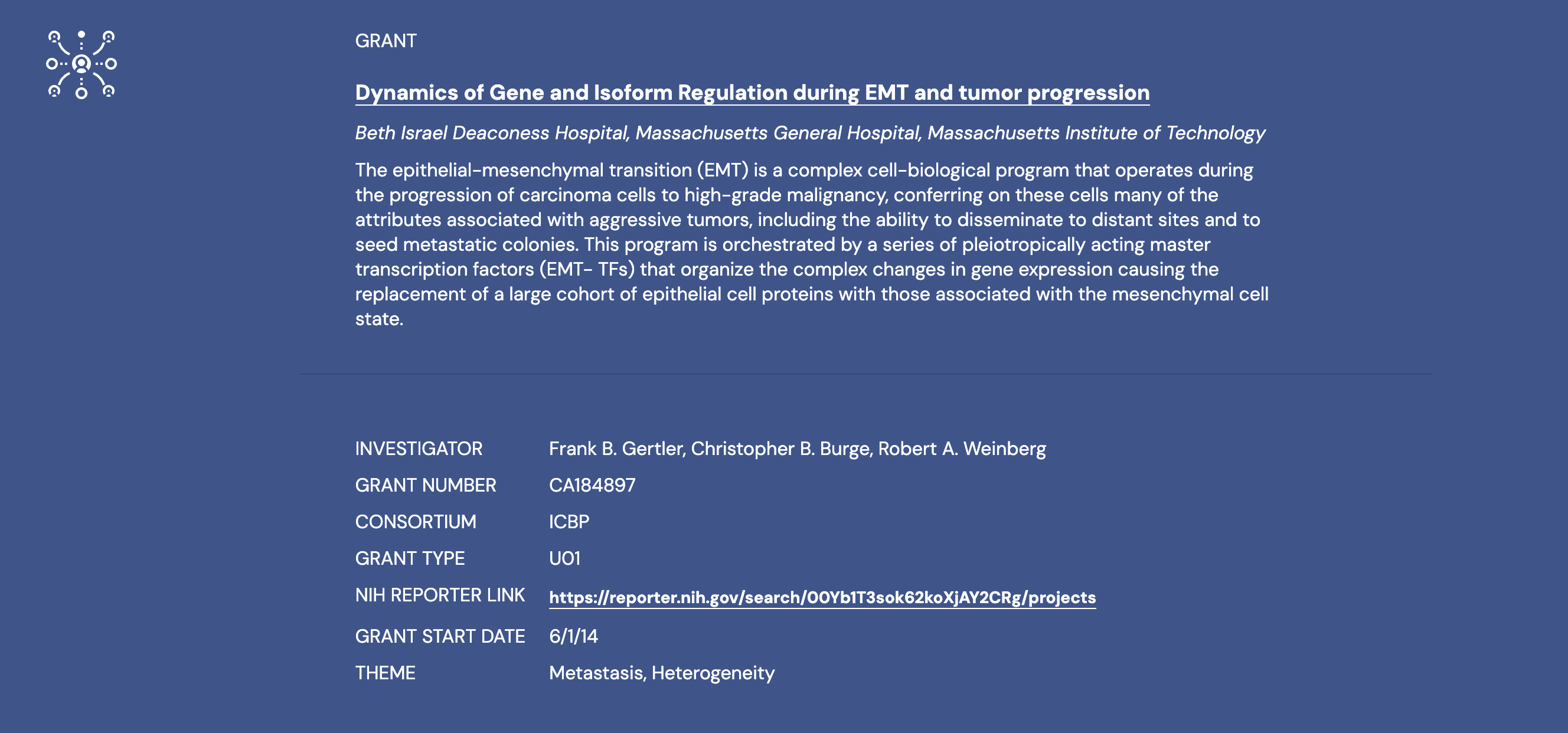
Grant Metadata Keys & Their Definitions
Every grant contains a summary of the grant followed by the following metadata types.
Investigator – The lead researcher(s) or principal investigator(s) responsible for the project.
Grant Number – A unique identifier assigned to the grant by the funding agency.
Consortium – The research consortium or collaborative group overseeing the grant.
Grant Type – The classification of the grant, which is an NIH cooperative agreement.
NIH Reporter Link – A direct URL to the NIH RePORTER database, where grant details and funding information are stored.
Grant Start Date – The official start date of the research project under this grant.
Theme – The primary research focus areas covered by the grant.
Publications
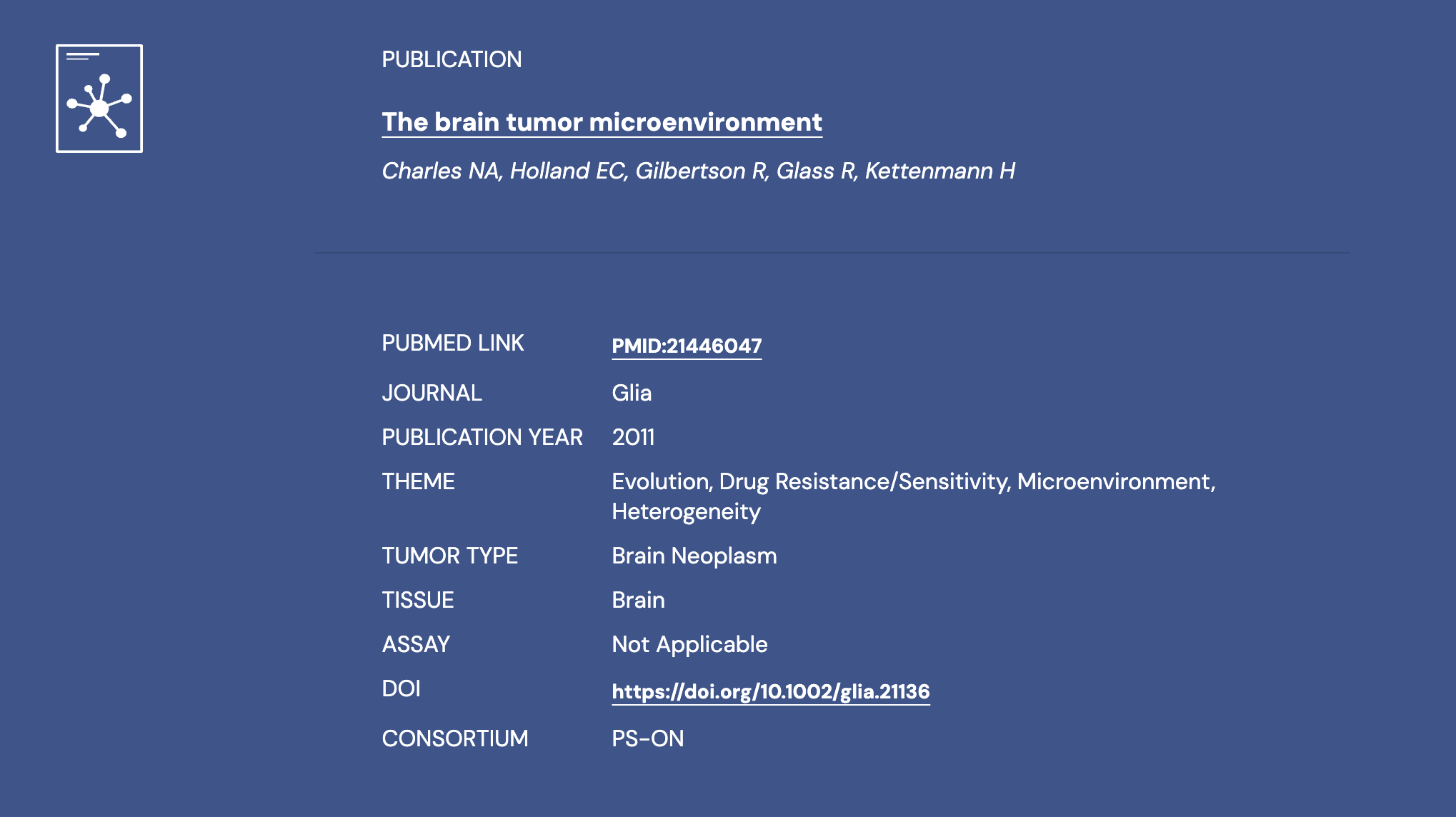
Publication Metadata Definitions
Pubmed Link – A direct link to the publication on PubMed, referenced by a unique PMID (PubMed Identifier).
Journal – The name of the scientific journal in which the research article was published.
Publication Year – The year the article was officially published.
Theme – The major research topics or biological processes studied in the paper.
Tumor Type – The specific category of cancer being investigated.
Tissue – The biological tissue examined in the study.
Assay – The experimental or analytical method used to conduct the research.
"Not Applicable" suggests that the study might be a review, computational analysis, or theoretical model rather than an experimental assay.
DOI – The Digital Object Identifier (DOI), a permanent and unique link for locating the publication online.
Consortium – The research collaboration or initiative funding or supporting the work.
Datasets
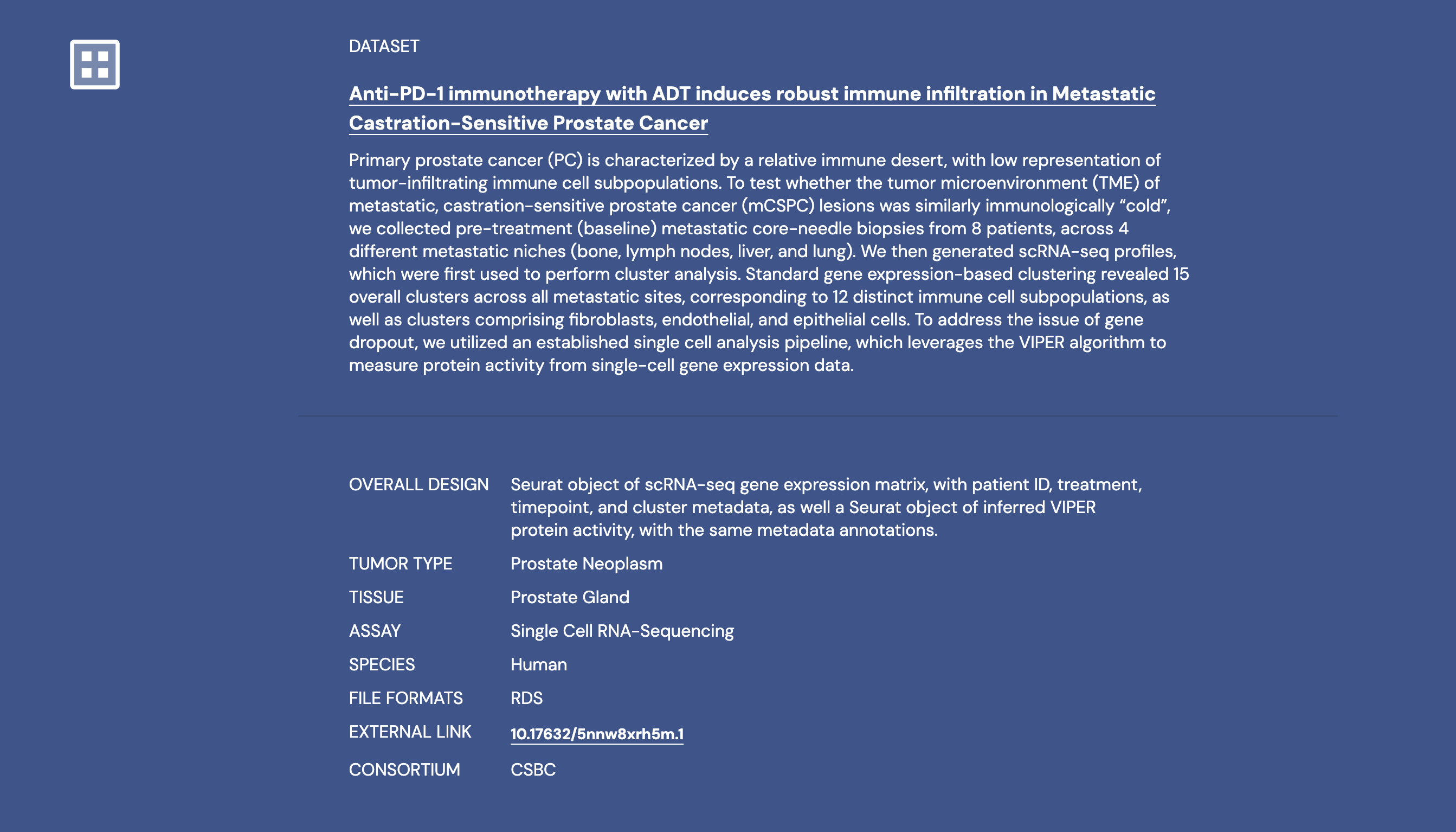
Dataset Metadata Definitions
Overall Design – Describes the structure and scope of the dataset, including the type of data collected and additional metadata annotations (e.g., patient ID, treatment, timepoint, cluster metadata).
Tumor Type – Specifies the classification of cancer present in the dataset.
Tissue – Indicates the biological tissue from which the dataset samples were taken.
Assay – Identifies the experimental method or technique used to generate the dataset.
Species – Denotes the organism from which the samples originate.
File Formats – Lists the format(s) in which the dataset is stored.
External Link – Provides a persistent identifier or reference to access the dataset externally.
Consortium – Identifies the research group or collaborative initiative responsible for generating or curating the dataset.
Tools
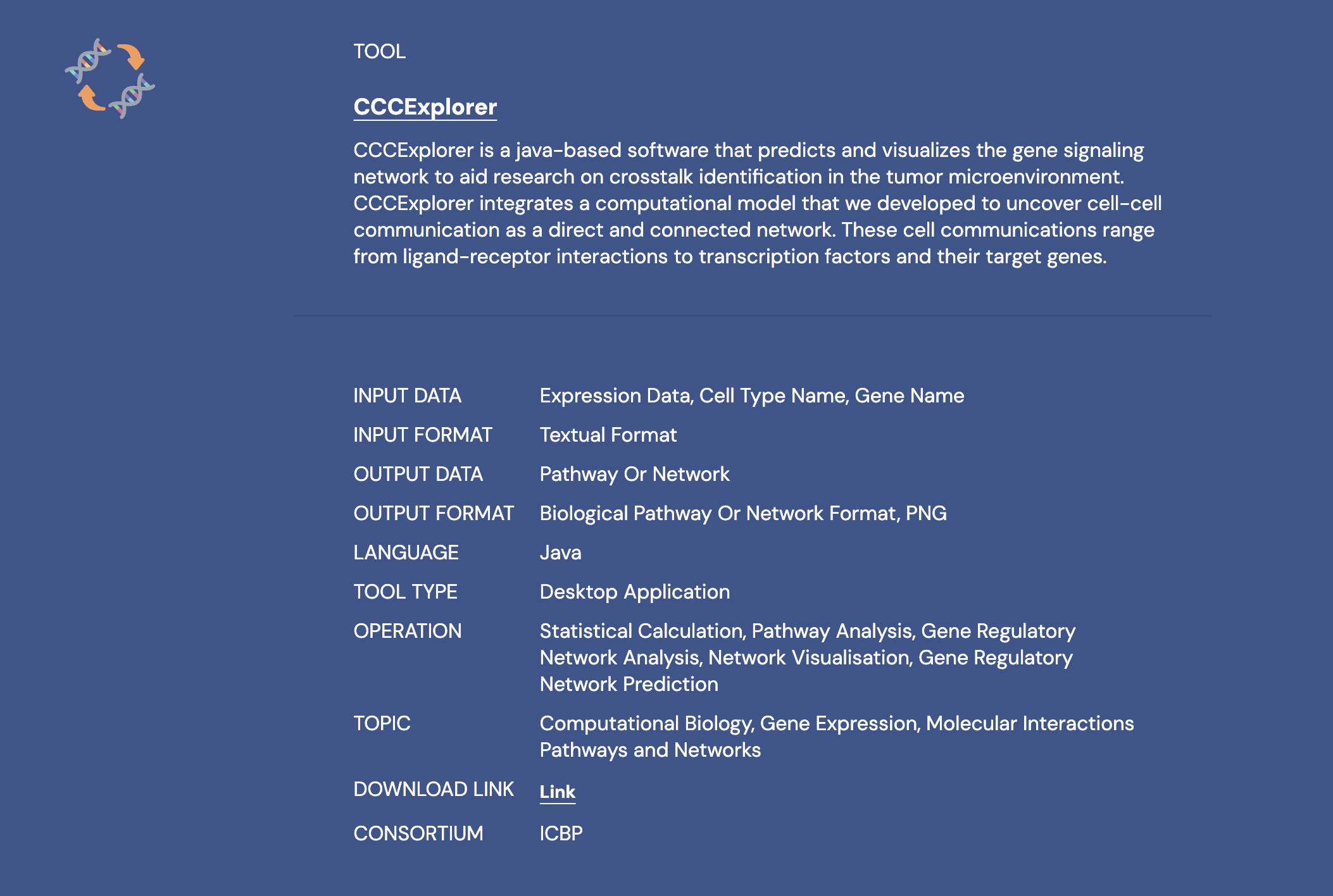
Tool Details Metadata Keys
Input Data – The specific type of biological or computational data that can be used as input for the tool, such as expression data, cell type information, or gene names.
Input Format – The accepted format or structure in which the input data must be presented, typically describing the textual or computational representation required by the tool.
Output Data – The type of analytical or computational result generated by the tool, such as pathway or network information.
Output Format – The specific format in which the tool presents its results, including descriptive formats (e.g., Biological Pathway or Network Format) and file types.
Language – The primary programming language used to develop or implement the tool.
Tool Type – The classification of the tool based on its technical infrastructure or deployment method, such as desktop application, web application, or command-line tool.
Operation – The primary computational or analytical functions performed by the tool, describing the specific types of analyses or transformations it can execute.
Topic – The broad scientific or research domains in which the tool is applicable, providing context for its primary area of use or research focus.
Download Link – The direct URL or resource identifier from which the tool can be accessed, downloaded, or installed.
Consortium – The research group, organization, or collaborative network responsible for developing or maintaining the tool.
Educational Resources
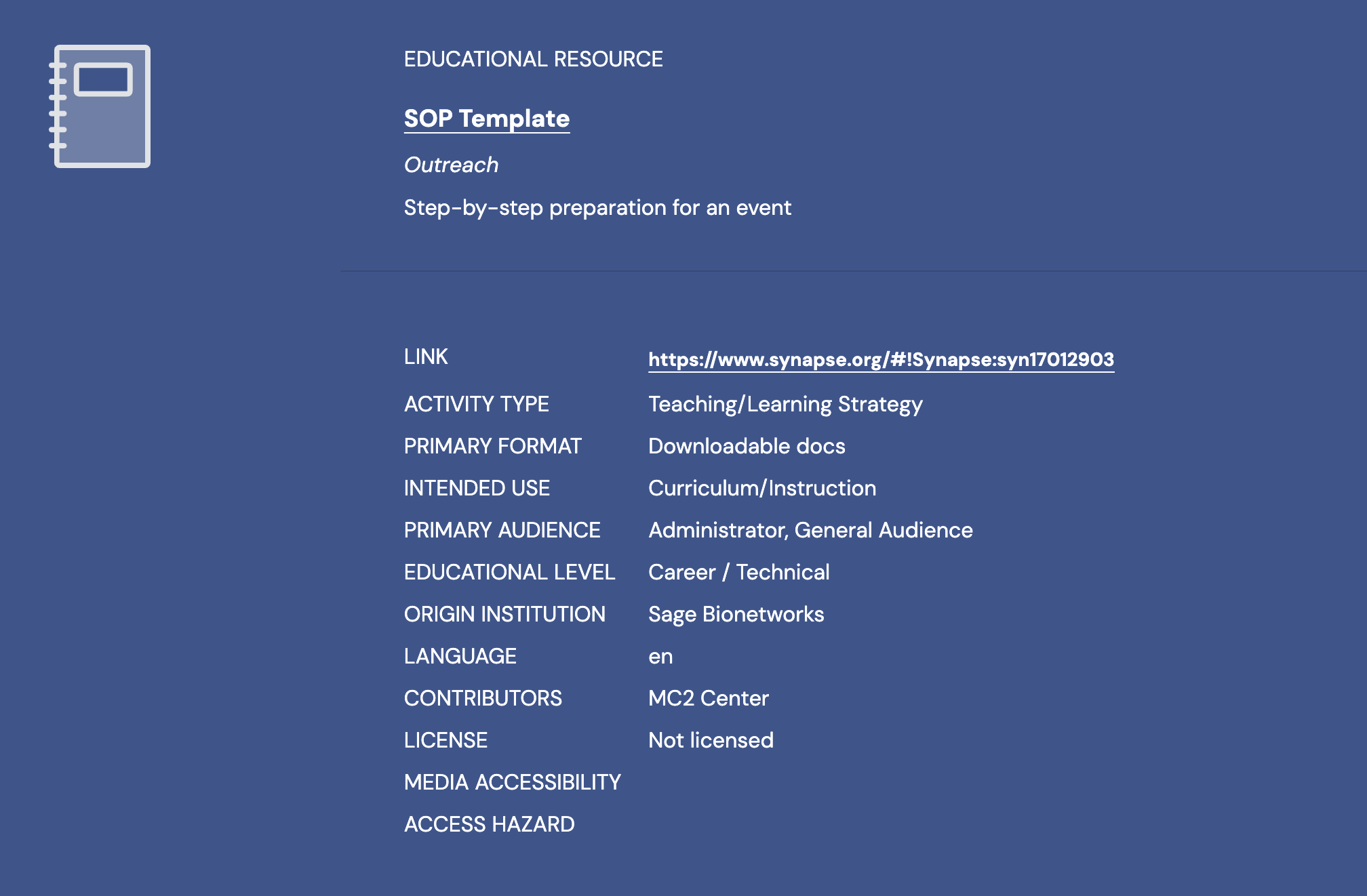
Educational Resource Metadata Keys & Their Definitions
Educational metadata may vary based on the entry.
Link – The direct web address or persistent URL where the educational resource can be accessed or downloaded.
Activity Type – The primary pedagogical approach or learning methodology employed in the resource, describing how the educational content is meant to be used or experienced.
Teaching/Learning Strategy – The specific instructional method or approach used to facilitate learning, such as problem-based learning, collaborative learning, or self-directed learning.
Primary Format – The main file type or media format of the educational resource, indicating how the content is presented (e.g., downloadable documents, video, interactive module).
Intended Use – The primary purpose or context for which the educational resource is designed, such as curriculum development, instructional support, or professional training.
Primary Audience – The main target group or professional role for whom the resource is primarily created, including specific roles like administrators, educators, or general learners.
Educational Level – The specific stage or professional development phase for which the resource is most appropriate, such as academic level, professional training, or career stage.
Origin Institution – The organization or institution responsible for creating or initially developing the educational resource.
Language – The primary language in which the educational resource is presented.
Contributors – Individuals or organizations that have played a significant role in developing, reviewing, or supporting the creation of the resource.
License – The intellectual property rights status of the resource, indicating how it can be used, shared, or modified.
Media Accessibility – Details about the resource's compliance with accessibility standards, ensuring usability for individuals with different abilities.
Use Requirements – A list of specific physical equipment, materials, tools, or technological resources necessary to effectively implement or engage with the educational resource. Includes technological infrastructure (like speakers or screens) and physical materials (such as laboratory equipment, safety gear, or specialized supplies) required for the intended learning activity.
Dataset Link – The direct, persistent URL or identifier that provides access to the specific dataset associated with the educational resource, enabling users to locate, reference, or download the underlying data supporting the educational content.
Access Hazard – Potential barriers or challenges that might prevent or complicate access to the educational resource for certain users.
People

People Metadata Key Definitions
Email – The contact email associated with the researcher or contributor.
Orcid ID – ORCID is a free, unique, persistent identifier for individuals to use as they engage in research, scholarship, and innovation activities. This identifier can be used by researchers to track their publications and contributions. Learn more at ORCID .
Consortium – The research network or collaboration to which the researcher belongs.
Working Group Participation – The specific research focus or working group in which the researcher actively contributes.
